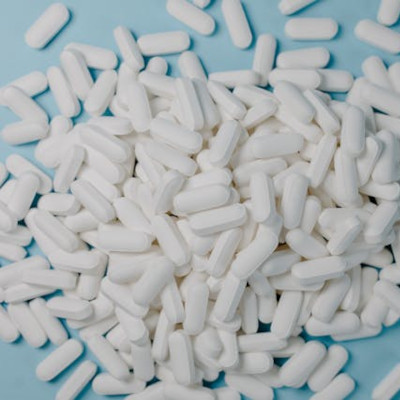
07 Feb Hydrocodone Vs. Oxycodone: Understanding The Key Differences
Hydrocodone and oxycodone are both effective opioids for pain management but differ in strength and potential for addiction. Hydrocodone is typically used for moderate pain and is often combined with acetaminophen, while oxycodone is stronger and preferred for severe pain. Both require careful prescription and management due to risks of addiction and side effects, highlighting the importance of following medical guidance and considering non-opioid alternatives for pain relief.
Table of Contents:
Opioids play a very important role in managing pain, giving relief for individuals dealing with moderate to severe pain. However, because opioids come with risks and the need for tailored treatment, it is necessary to understand all of your options. Two of the most commonly prescribed opioids are hydrocodone and oxycodone. While they share some similarities, they also have some significant differences. Let’s take some time to answer one of the most common questions when comparing these medications, “what’s the difference between hydrocodone and oxycodone?”
Opioids Detox
Recovering from opioid addiction is essential to protect your long-term health, career, relationships, and more. Elite Home Detox provides customized one-on-one treatment programs that are tailored to your needs. Our in-home appointments make it simple to get discreet, professional care to help you make a lasting recovery.
Book NowOverview of Hydrocodone
Hydrocodone is a common opioid pain reliever that is used for moderate to severe pain. Often combined with other medicines, like acetaminophen, to help it work even better, in other scenarios it can also be used as a cough suppressant. Hydrocodone is sold under brand names like Vicodin, Norco, and Lortab, which mix hydrocodone with acetaminophen.
Individuals needing long-term pain relief might use extended-release forms like Hysingla ER. Hydrocodone works by attaching to opioid receptors in the brain and spinal cord, which changes how your body feels pain.
The typical dose spans from 5 mg to 20 mg, (however it can range all the way up to 120 mg) and is available as tablets, capsules, or liquid. It’s usually taken every 4-6 hours as needed or, in extended-release form, once daily for ongoing relief.

Overview of Oxycodone
Oxycodone is another widely used opioid that is known for being stronger than hydrocodone. It is often prescribed for severe pain, including pain after surgery or cancer-related pain.
Oxycodone is sold under names like OxyContin, an extended-release version, and Percocet, which combines it with acetaminophen. Like hydrocodone, it attaches to opioid receptors in the brain and spinal cord to reduce how pain is felt in the body. Since oxycodone is stronger, it’s usually chosen for more serious pain.
Oxycodone doses range from 5 mg to 30 mg (but, in severe cases can go all the way up to 160 mg) and are often available in immediate-release and extended-release forms. Depending on the type, it can be taken every 4-6 hours or once a day for continuous relief.
Key Differences Between Hydrocodone and Oxycodone
While both of these medications work well for pain relief, there are some clear differences between them that help doctors decide which one to prescribe.
One of the biggest differences is their strength. Oxycodone is stronger than hydrocodone, making for an ideal choice for treating severe pain, like pain from cancer or after major surgery. Hydrocodone, on the other hand, is often recommended for moderate pain, like after minor surgery or injury. Because of this, hydrocodone is more commonly found in combination with acetaminophen, which helps boost its pain-relieving effects.
The side effects of these medications also vary. Both drugs can cause common opioid-related side effects like drowsiness, nausea, and constipation. However, oxycodone tends to cause more pronounced drowsiness and has a higher likelihood of creating a feeling of euphoria (1). This euphoria can make oxycodone more addictive than hydrocodone. For this reason, doctors often weigh the benefits and risks more carefully when choosing between hydrocodone and oxycodone, especially for patients who might be at higher risk for addiction.
Another difference is in how readily available each medication is. Hydrocodone is more frequently prescribed, especially for moderate pain, and is widely available in combination medicines. Oxycodone is usually reserved for more serious pain conditions and is subject to stricter prescribing rules because of its strength and greater potential for misuse.
| Aspect | Hydrocodone | Oxycodone | Similarities |
|---|---|---|---|
| Strength & Usage | Less strong; recommended for moderate pain. | Stronger; used for severe pain. | Both are used for pain relief. |
| Common Combination | Often combined with acetaminophen. | Less commonly combined with other drugs. | Both are opioids used in pain management. |
| Side Effects | Drowsiness, nausea, constipation. | More pronounced drowsiness, euphoria, which may lead to higher addiction risk. | Both can cause opioid-related side effects. |
| Prescribing Frequency | More frequently prescribed. | Subject to stricter prescribing rules due to potential for misuse. | Both are controlled under similar regulations. |
| Abuse Potential | Lower compared to Oxycodone. | Higher due to euphoric effects. | Both are Schedule II drugs with high abuse potential. |
| Dependence & Withdrawal | Can lead to dependence; withdrawal includes sweating, restlessness, nausea. | Similar dependence risk; withdrawal includes muscle pain, other symptoms. | Long-term use can lead to dependence and withdrawal symptoms. |
| Safety Warnings | Must be used as prescribed, not with alcohol or certain drugs. | Same precautions apply. | Similar safety warnings regarding alcohol and drug interactions. |
Similarities Between Hydrocodone and Oxycodone
Although they have differences, these medications do share several important similarities. Both are classified as Schedule II controlled substances, meaning they have a high potential for abuse and addiction. They are commonly prescribed to manage similar types of pain, like acute pain after surgery or chronic pain from long-term medical conditions. These drugs are valuable for use in pain management but they require careful use to avoid any future problems.
Both of these medications work in similar ways by attaching to opioid receptors in the brain and spinal cord. This action changes how the body perceives pain, providing a great deal of relief for patients. However, because they affect the brain’s reward system, long-term use of either medication can lead to dependence (2). When someone stops taking these drugs suddenly, they may experience withdrawal symptoms like sweating, restlessness, nausea, and muscle pain. These symptoms can be uncomfortable and are one reason why tapering off opioids under medical supervision is so important.
Also, both medications carry similar safety warnings. They should only be used as prescribed and should never be combined with alcohol or certain other drugs without consulting a doctor. Taking these precautions can help reduce the risks associated with these powerful medications.
Clinical Considerations in the Hydrocodone vs Oxycodone Matchup
The choice between hydrocodone and oxycodone depends on a variety of factors, including the type of pain, the patient’s medical history, and their specific experience with opioids. For example, anyone with moderate pain might be prescribed hydrocodone, while someone with severe pain may need the stronger effects of oxycodone.
The right dosage and timing are also crucial. Doctors try to prescribe the smallest effective dose for the shortest possible time to reduce any risks. Plus, genetic differences can affect how people process these drugs, which can influence how well they work and what side effects occur (3).
Cost and insurance coverage can also make a difference. Hydrocodone is usually less expensive than oxycodone, which might make it a better choice for some people when budget is a consideration. However, some insurance plans often have specific rules that may influence availability.
Patient Management and Safety
Using oxycodone and hydrocodone safely requires some careful management and good communication with your doctor. It is important to follow the prescription exactly and avoid mixing these medicines with alcohol or other sedatives, as this can lead to dangerous side effects.
To prevent the risk of misuse, keep opioids stored securely, out of reach of children or others who might take them. Never share these medicines with anyone else because that is both illegal and unsafe. When the medication is no longer needed, dispose of it properly through a take-back program or an FDA-approved method.

Drug Interactions
Both of these medications can interact with other drugs and substances, which can lead to increased side effects or a reduction in how effective they are. For instance, combining opioids with benzodiazepines (like Xanax or Valium) or muscle relaxers (such as carisoprodol) can significantly raise the risk of dangerous side effects, including extreme drowsiness, slowed breathing, or even overdose (4). Certain antidepressants, specifically those classified as selective serotonin reuptake inhibitors (SSRIs) or monoamine oxidase inhibitors (MAOIs), may also amplify the sedative effects or increase the risk of serotonin syndrome, a potentially life-threatening condition (5).
Additionally, medications like antihistamines (found in over-the-counter allergy or cold products) can worsen drowsiness when taken with opioids. Anti-seizure drugs such as gabapentin or pregabalin, which are sometimes prescribed alongside opioids for nerve pain, can also increase sedation and suppress breathing.
Food interactions should not be ignored ,either. Eating a high-fat meal before taking extended-release opioids can delay their absorption, potentially altering how well they manage pain (6). For example, extended-release formulations of hydrocodone or oxycodone may not work as consistently if they are taken with fatty foods. This can lead to either decreased pain relief or an unpredictable release of medication, which could increase the risk of side effects.
Alcohol is especially dangerous when combined with hydrocodone or oxycodone. Even small amounts of alcohol can increase respiratory depression, which is a serious condition where breathing becomes dangerously slow. Patients are strongly advised to avoid alcohol entirely while taking these medications.
There are also specific contraindications for opioids like hydrocodone and oxycodone. People with severe respiratory conditions such as chronic obstructive pulmonary disease (COPD) or sleep apnea should use opioids with extreme caution or avoid them altogether, because these drugs can further depress breathing. People with a history of substance abuse or addiction may also be at higher risk of misuse or dependency, so alternative pain management strategies might be recommended.
Recent Research and Developments
Recent studies have provided deeper insights into the use of hydrocodone and oxycodone for pain management. Research comparing these opioids show that both are effective for short-term pain relief. However, prolonged use can lead to tolerance, which can reduce their effectiveness over time.
In the world of non-opioid alternatives, a great deal of progress has been made. For instance, Vertex Pharmaceuticals developed an experimental non-opioid analgesic, VX-548, which showed to be effective in treating post-operative pain during Phase 3 clinical trials. Although VX-548 was more effective than a placebo, it did not yet prove to be more effective than traditional opioid treatments like hydrocodone combined with acetaminophen. This shows some of the challenges in developing non-opioid medications that match the potency of existing opioids.
Also, there is a growing interest in non-pharmacological therapies for chronic pain. Techniques like physical therapy, psychological interventions, and other complementary approaches are being explored to provide pain relief without the risks associated with medications.
In response to the growing opioid crisis, regulatory bodies have begun implementing stricter guidelines to curb misuse while ensuring that patients with legitimate pain needs continue to receive the appropriate care that they need. These measures are trying to balance the need for pain relief with the goal of reducing the potential for addiction and overdose.
Conclusion
Deciding between these medications means taking into consideration your specific needs, the type of pain you’re experiencing, and your overall health. Both medicines are powerful pain relievers, but understanding the difference between oxycodone and hydrocodone and their similarities can help you and your doctor create a plan that works best for you. Having open communication, following your doctor’s instructions, and exploring non-opioid options are all important steps toward safe pain relief that works for you. With more knowledge and some very careful choices, you can manage your pain responsibly while avoiding any unnecessary risks.
Opioids Detox Program
Opioid addiction can happen to anyone. If you’re ready to start your recovery journey, Elite Home Detox is here to help. Our patients receive a personalized treatment program, one-on-one care, and in-home appointments that offer unparalleled convenience and privacy. We help you not only overcome addiction, but equip you with the skill set you need to stay sober for good.
If you’re ready to schedule an appointment, give us a call or click the button below.
Book NowReferences:
- Sapkota A, Takematsu M, Adewunmi V, Gupta C, Williams AR, Friedman BW. Oxycodone induced euphoria in ED patients with acute musculoskeletal pain. A secondary analysis of data from a randomized trial. Am J Emerg Med. 2022;53:240-244. doi:10.1016/j.ajem.2022.01.016.
- Nguyen JD, Grant Y, Taffe MA. Paradoxical changes in brain reward status during oxycodone self-administration in a novel test of the negative reinforcement hypothesis. Br J Pharmacol. 2021;178(18):3797-3812. doi:10.1111/bph.15520.
- Kumar S, Kundra P, Ramsamy K, Surendiran A. Pharmacogenetics of opioids: a narrative review. Anaesthesia. 2019;74(11):1456-1470. doi:10.1111/anae.14813.
- Baldo BA. Opioid analgesic drugs and serotonin toxicity (syndrome): mechanisms, animal models, and links to clinical effects. Arch Toxicol. 2018;92(8):2457-2473. doi:10.1007/s00204-018-2244-6.
- Reyes TM. High-fat diet alters the dopamine and opioid systems: effects across development. Int J Obes Suppl. 2012;2(Suppl 2):S25-S28. doi:10.1038/ijosup.2012.18.


